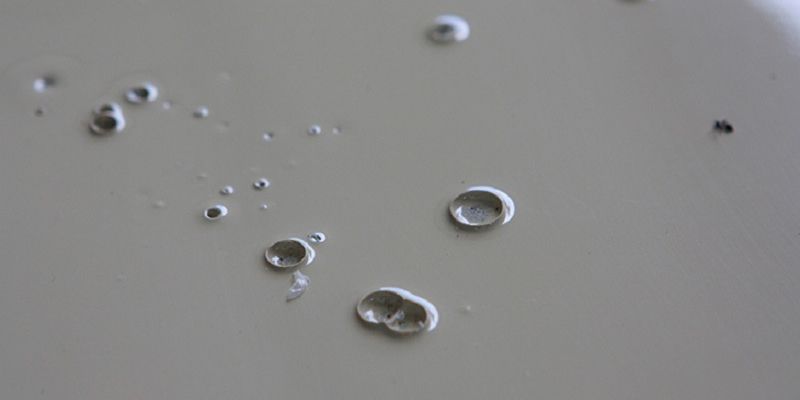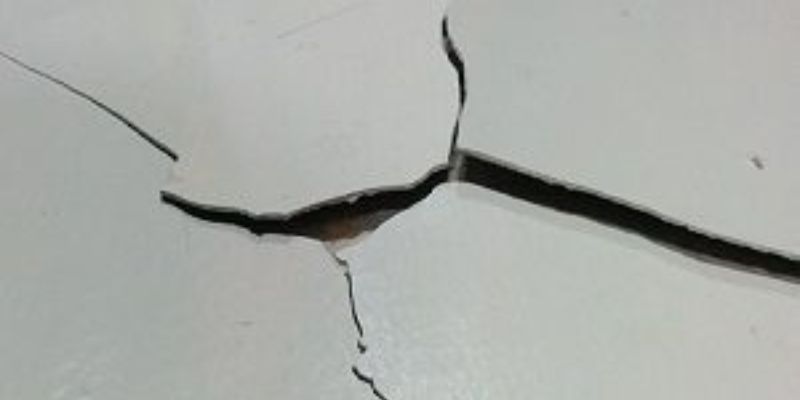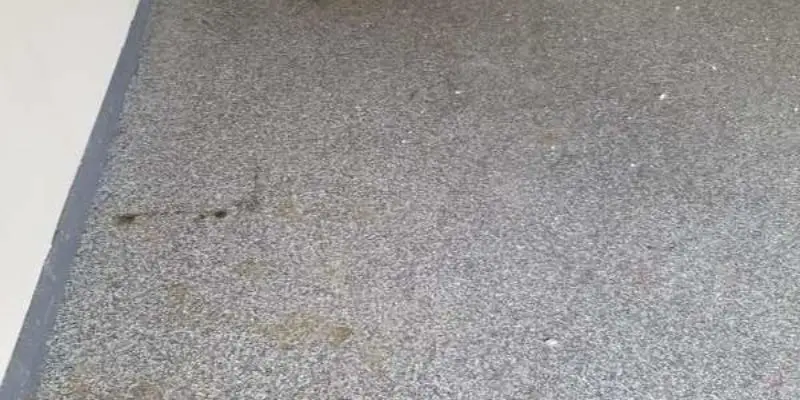Epoxy floors have become increasingly popular in recent years due to their durability, easy maintenance, and aesthetic appeal. However, like any other flooring type, epoxy floors are not immune to problems. From discoloration to cracking and peeling, epoxy floors can suffer from a range of issues that can be frustrating for homeowners and businesses alike. In this article, we’ll explore some of the most common epoxy floor problems and provide practical tips on how to fix them. Whether you’re dealing with a minor cosmetic issue or a more serious structural problem, we’ve got you covered. So, if you want to keep your epoxy floors looking their best and ensure they last for years to come, read on for our expert advice and recommendations.
Common problems with epoxy flooring
Peeling
Peeling is a common problem with epoxy floors. It occurs when the epoxy coating starts to lift away from the concrete surface beneath it. There are several reasons why epoxy floors may start to peel. One of the most common causes is moisture. If the concrete surface is not properly prepared before the epoxy coating is applied, moisture can become trapped underneath the coating, causing it to peel. Another common cause of peeling is improper mixing of the epoxy coating. If the mixture is not properly blended, it can result in weak spots that are more prone to peeling.

To fix the peeling, you’ll need to remove the affected area of the epoxy coating and reapply it. First, use a scraper or grinder to remove any loose or peeling epoxy. Then, clean the area thoroughly with a degreaser and let it dry completely. Once the area is clean and dry, you can apply a new layer of epoxy coating. Be sure to follow the manufacturer’s instructions carefully to ensure proper mixing and application.
Bubbling
Bubbling is another common problem with epoxy floors. It occurs when air becomes trapped underneath the epoxy coating, causing it to bubble up. This can be caused by a variety of factors, including improper mixing of the epoxy coating, temperature fluctuations during application, or moisture trapped under the coating.

To fix bubbling, you’ll need to remove the affected area of the epoxy coating and reapply it. First, use a scraper or grinder to remove any bubbling epoxy. Then, clean the area thoroughly with a degreaser and let it dry completely. Once the area is clean and dry, you can apply a new layer of epoxy coating. Be sure to follow the manufacturer’s instructions carefully to ensure proper mixing and application. You may also want to consider using a roller or brush to apply the coating, rather than a sprayer, to help prevent air from becoming trapped.
Cracking
Cracking is another common problem with epoxy floors. It can be caused by a variety of factors, including improper installation, excessive weight or impact, or temperature fluctuations. Cracks in epoxy floors can be unsightly and can also compromise the integrity of the flooring.

To fix the cracking, you’ll need to fill the cracks with an epoxy filler. First, clean the area thoroughly with a degreaser and let it dry completely. Then, use a putty knife or scraper to apply the filler to the cracks. Smooth out the filler with the putty knife or a trowel, making sure it is level with the surrounding epoxy coating. Allow the filler to dry completely before sanding the area smoothly and applying a new layer of epoxy coating.
Staining
Staining is a common problem with epoxy floors, especially in high-traffic areas. Stains can be caused by a variety of factors, including spills, dirt, and other contaminants. If left untreated, stains can become more difficult to remove over time.

To fix staining, you’ll need to clean the affected area thoroughly with a degreaser and a scrub brush. If the stain is particularly stubborn, you may need to use a specialized cleaner or a poultice. Once the stain has been removed, rinse the area thoroughly with water and let it dry completely. You may also want to consider applying a sealer to the epoxy coating to help prevent future staining.
Improper installation
Improper installation is a common problem with epoxy floors. If the concrete surface is not properly prepared before the epoxy coating is applied, or if the coating is not applied correctly, it can result in a range of problems, including peeling, bubbling, and cracking.
To prevent improper installation, it’s important to work with a reputable and experienced epoxy flooring contractor. Be sure to ask for references and check their reviews online before hiring them. It’s also important to make sure the concrete surface is properly prepared before the epoxy coating is applied. This may involve cleaning, grinding, or etching the surface to ensure proper adhesion.
How to fix peeling, bubbling, and cracking
Peeling, bubbling, and cracking are some of the most common problems with epoxy floors. To fix these issues, you’ll need to remove the affected area of the epoxy coating and reapply it. This process may involve using a scraper or grinder to remove the damaged coating, cleaning the area thoroughly with a degreaser, and applying a new layer of epoxy coating.
It’s important to follow the manufacturer’s instructions carefully when applying the epoxy coating to ensure proper mixing and application. You may also want to consider using a roller or brush to apply the coating, rather than a sprayer, to help prevent air from becoming trapped and minimize the risk of bubbling.
How to fix staining and discoloration
Staining and discoloration can be caused by a range of factors, including spills, dirt, and other contaminants. To fix these issues, you’ll need to clean the affected area thoroughly with a degreaser and a scrub brush. If the stain is particularly stubborn, you may need to use a specialized cleaner or a poultice.
Once the stain has been removed, rinse the area thoroughly with water and let it dry completely. You may also want to consider applying a sealer to the epoxy coating to help prevent future staining.
Preventing future epoxy floor problems
Preventing epoxy floor problems is often easier than fixing them. To prevent issues like peeling, bubbling, and cracking, it’s important to properly prepare the concrete surface before applying the epoxy coating. This may involve cleaning, grinding, or etching the surface to ensure proper adhesion.
It’s also important to follow the manufacturer’s instructions carefully when mixing and applying the epoxy coating. Be sure to apply the coating in a well-ventilated area and avoid applying it in extreme temperatures or humidity. You may also want to consider using a roller or brush to apply the coating, rather than a sprayer, to help prevent air from becoming trapped and minimize the risk of bubbling.
Conclusion
Epoxy floors offer a range of benefits, including durability, easy maintenance, and an attractive finish. However, like any other flooring type, they are not immune to problems. Peeling, bubbling, cracking, staining, and improper installation are some of the most common issues with epoxy floors. To fix these problems, you’ll need to remove the affected area of the epoxy coating and reapply it, or fill in the cracks with an epoxy filler. To prevent future problems, it’s important to properly prepare the concrete surface before applying the epoxy coating, follow the manufacturer’s instructions carefully, and apply the coating in a well-ventilated area. With proper maintenance and care, your epoxy floors can last for years to come.
Also read: Epoxy grout problems
